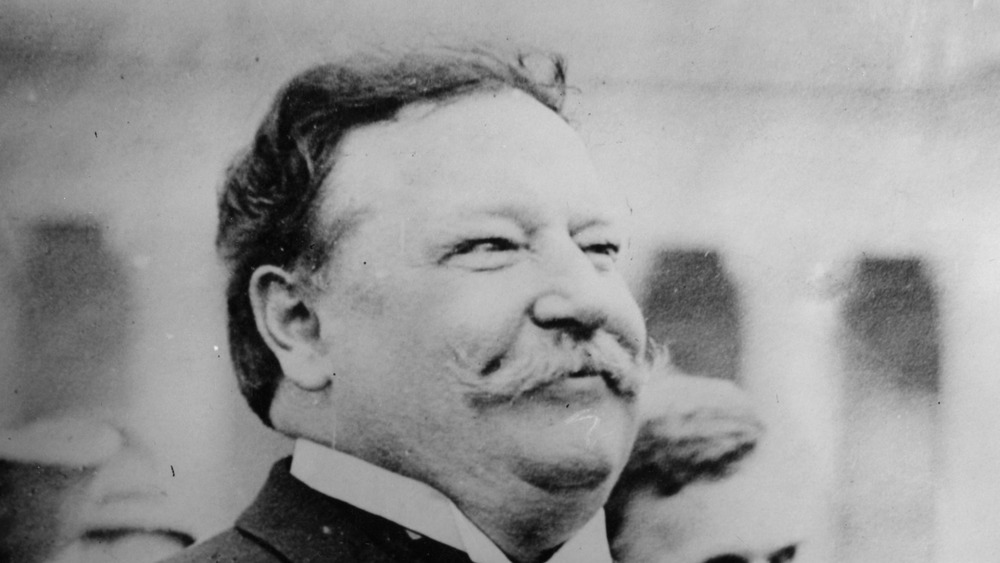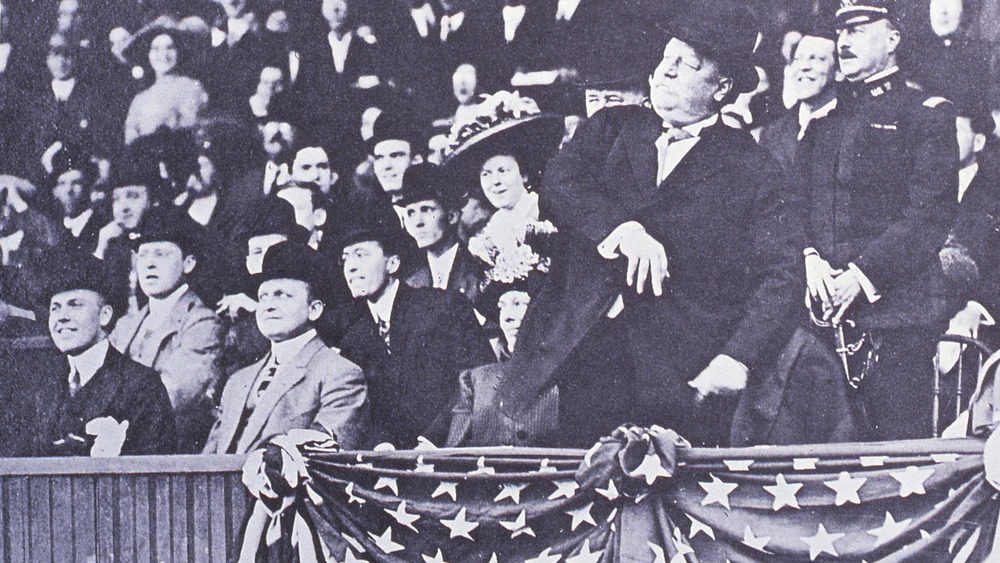A Look At The Assassination Attempt Against William Taft
We may receive a commission on purchases made from links.
William Howard Taft wasn't exactly the most skilled politician. Most historians rank him in the middle in terms of effectiveness, but he is the only person to have been President of the United States and Chief Justice of the United States — the 27th and the 10th, respectively. Taft was just a single-term president and was so unpopular, he came in third with just 23 percent of the vote in his reelection campaign in 1912.
But that didn't mean people didn't want him dead. In October 1911, a 52-year-old Minnesota man by the name of Julius Bergerson began bragging that he had an assassination plot in place for Taft's upcoming visit, but was arrested and declared insane on the morning of the president's arrival before he took any action, The New York Times reported at the time. When Taft visited Norwich, Connecticut, in July 1909 to celebrate the 250th anniversary of the founding of the city, one woman scared off a man with a pistol who was rapidly approaching the president, but the Secret Service was never able to catch up with him. And, in October 1909, 27-year-old Arthur Wright traveled all the way from Lowell, Massachusetts, to Portland, Oregon, to take a shot at Taft during a parade to honor the president before a uniformed police officer tackled Wright as he made his way through the crowd, the Oregon Daily Journal reported at the time.
An assassination attempt at the U.S.-Mexico border
Several other attempts of various seriousness to assassinate William Howard Taft were foiled during Taft's only term, but one had graver consequences than the rest. In October 1909, a historic meeting was set between Taft and Mexican president Porfirio Diaz. It would be the first meeting between the heads of state of the two countries, and the first time an American president would step over the U.S.-Mexico border. They agreed on meeting at the Chamizal strip between El Paso, Texas, and Ciudad Juarez. It was considered disputed — but neutral — territory, and they agreed that no flags of either country would fly during the meeting. However, as news of the meeting began to circulate, a massive influx of assassination threats against both presidents began to raise concerns.
On the day of the summit — even with Texas Rangers, U.S. and Mexican troops, Secret Service agents, FBI agents, and U.S. Marshals present — one man carrying a pistol sat along the route both presidents would be taking just moments later. A Texas Ranger spotted, disarmed, and restrained the man as Taft and Diaz passed just feet away. According to Charles H. Harris III and Louis R. Sadler, in their book, The Secret War in El Paso, Taft made light of the assassination attempt, "If anyone wanted to get me he couldn't very well missed such an easy target."

